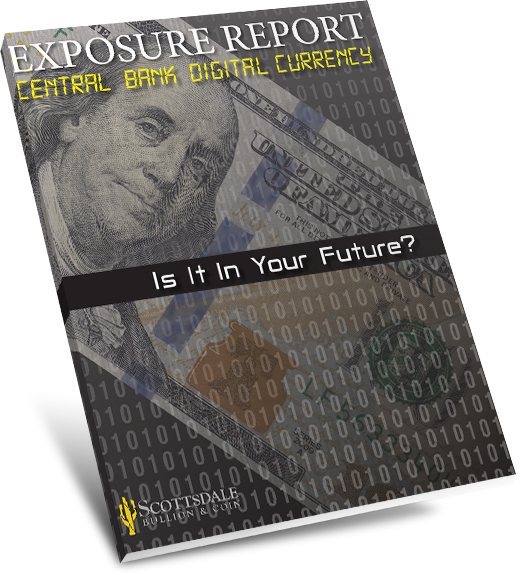 The US government’s exploration of a digital dollar has been prompted by the surging popularity of cryptocurrencies, the rapid digitization of foreign economies, and the impressive capabilities of relevant technology. However, the Federal Reserve’s posture of strategic ambiguity has made it challenging for the American people to determine when the digital dollar will make its ascent. By piecing together official comments, low-profile experiments, and keystone developments, we can gain an accurate unfolding of events leading to the digital dollar.
The US government’s exploration of a digital dollar has been prompted by the surging popularity of cryptocurrencies, the rapid digitization of foreign economies, and the impressive capabilities of relevant technology. However, the Federal Reserve’s posture of strategic ambiguity has made it challenging for the American people to determine when the digital dollar will make its ascent. By piecing together official comments, low-profile experiments, and keystone developments, we can gain an accurate unfolding of events leading to the digital dollar.
Digital Dollar Timeline
Congress Requests CBDC Exploration – September – October, 2019
On September 25, 2019, the former FDIC Chair Sheila Bair spoke before the Senate Committee on Banking, Housing, and Urban Affairs urging the Federal Reserve to explore a CBDC. Notably, Blair hammered home the importance of a flexible, decentralized digital dollar as opposed to a top-down, centralized currency. The prescient testimony prompted several senators to call on Federal Reserve Chair Jerome Powell to begin the development of a “national digital currency.”
Jerome Powell’s Acknowledges CBDC Research – November 19, 2019
In a letter responding to federal legislators, Jerome Powell revealed that the Federal Reserve had already been analyzing the “cost and benefits of pursuing” a CBDC. Although this statement flew under the radar, it marked the first time an Executive Branch official confirmed the Fed’s exploration of a digital dollar. Unsurprisingly, Powell’s comments were lacking detail and depth which only served to fuel concerns and conspiracies surrounding the government’s intentions with a CBDC.
Federal Reserve Seeks Input from CBDC Developer – December 27, 2019
In late 2019, the Fed’s Board of Governors sought feedback from R3 – a pioneer in blockchain and digital currency technology – on the development of a now-realized, government-sponsored instant payment system called FedNow. In a response to the Fed’s request for comment, R3 mentioned its previous success in developing CBDCs for the Bank of Thailand. The focus of the exchange wasn’t a digital dollar, but it’s telling the government would seek input from a successful CBDC developer this early on in so-called exploration.
The FooWire Project – 2019
The FooWire Project was one of the first official digital currency experiments conducted by the Federal Reserve. The principal aim of the project was to determine the efficacy of distributed ledger technology (DLT) for building digital payment systems. In plain English, the Fed wanted to test how a decentralized infrastructure would serve as the basis for a government-backed payment system. Ultimately, the research concluded that DLTs weren’t ideal. Although the FooWire Project wasn’t explicitly related to the development of a CBDC, it highlighted the Fed’s growing aversion to decentralized platforms and increasing embrace of centralized structures.
Project Hamilton Builds CBDC System – Early 2020
Under the garish banner of Project Hamilton , the Federal Reserve Bank of Boston (Boston Fed) teamed up with the Massachusetts Institute of Technology (MIT) to create a potential CBDC. Bucking the trend of hypotheticals, the joint effort sought to flesh out the technical feasibility of a centralized digital dollar. In the end, the collaboration yielded a fully functional CBDC that far surpassed expectations. Once again, the government-sponsored research concluded that a centralized model was preferable to a more transparent, decentralized system. Project Hamilton also determined that a CBDC could effectively replace cash by exceeding all functions of fiat currency.
Executive Order 14067 – March 9, 2022
Under the official title of Ensuring Responsible Development of Digital Assets, President Biden’s Executive Order 14067 seeks to ensure potential digital currencies are used responsibly. The legislation outlines a six-pronged approach to achieving this goal, but most attention has been paid to the final point: the exploration of a United States CBDC. Federal officials had already hinted at the government’s dabbling in digital currencies, but this executive order served to officially acknowledge the movement toward the eventual development of a CBDC.
Governor DeSantis Bans CBDC Use – May 12, 2023
Never one to avoid defiance, Florida Governor Ron DeSantis signed first-in-the-nation legislation outrightly banning the use of a domestic or international CBDC within the Sunshine State earlier this year. Two separate laws work together to exclude digital currencies from the definition of money under the state’s Uniform Commercial Code, rendering a potential CBDC worthless at best and illegal at worst within the state. Several other CBDC skeptics have followed suit with similar bills drafted in Alabama, Louisiana, North Dakota, and Texas.
Launch of the FedNow System – July 20, 2023
The Fed recently unveiled a government-sponsored instant payment system designed to rival private-sector alternatives such as Real Time Payments (RTP). As mentioned earlier, the FedNow system has been years in the making and brings some much-needed speed and modernity to America’s archaic banking system. While the FedNow program is a payment processing system as opposed to a digital currency, many see the move as a precursor to a CBDC.
“There are a lot of people…concerned about cash going away entirely.”–SBC Founder Eric Sepanek
When is the digital dollar coming?
Generally, experts expect the digital dollar to be released in a few years. The closest the American public has to an official timeline comes from Treasury Secretary Janet Yellen who said it would take years to develop a CBDC.
At the same time, the government remains resolutely undecided on the issue, at least that’s what it wants to convey. As recently as June of 2023, a Fed spokesperson said the government “has not yet determined whether it will pursue a CBDC.” However, in the same breath, he mentioned the Treasury Department was launching an interagency group to explore a digital dollar.
This characteristic equivocation leads investors to assume it’s not a matter of if but when the digital dollar is coming. Chair Powell has conceded that CBDC development would require Congressional approval, so the American public would presumably have some foresight. With over 130 countries currently pursuing a CBDC and nearly a dozen already using a digital dollar, it’s not far-fetched to think the US would embrace a fully digitized monetary system at some point soon.
Why Investors Should Be Concerned About a CBDC.
You can’t ask when is the digital dollar coming while forgetting about the associated side effects. In an alarmingly short period, the government’s attitude towards a CBDC has evolved from a seemingly genuine concern for financial privacy to a staunch defense of a hyper-centralized and opaque digital dollar regime. The death of cash and the rise of centralized digital currency could come with severe consequences for investors. With a CBDC, the government would have total control over the value of the dollar, complete surveillance of transactions, and influence over how you use money.
“Centralization [is] what people should be worried about. The fact that a very small group of people can control everybody’s…access to the monetary system.”–Sr. Precious Metals Advisor Steve Rand
Stay up to date on the latest developments in the unfolding saga of the digital dollar by claiming a copy of our FREE CBDC Exposure Report.


